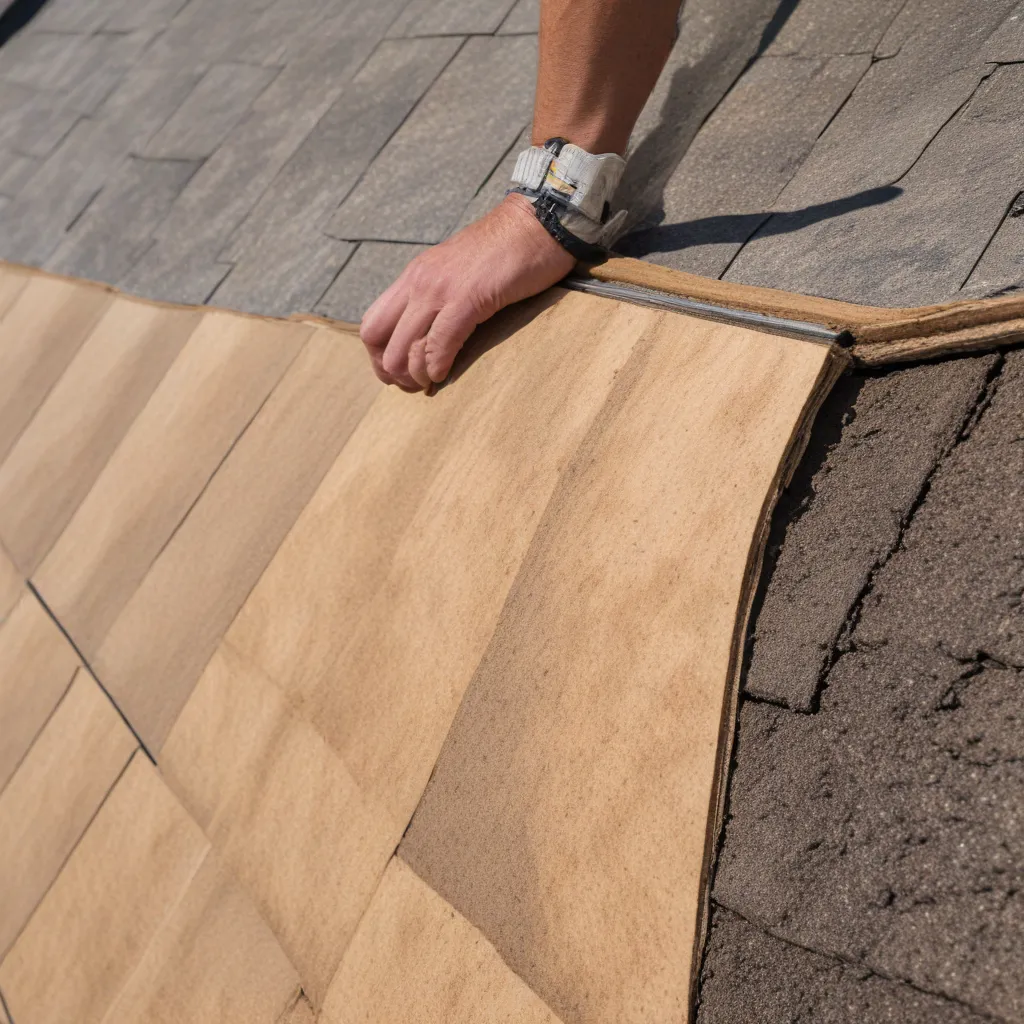
When it comes to protecting your home from the elements, the roofing system is your first and most critical line of defense. While the visible shingles, tiles, or metal panels play a crucial role, the underlayment beneath them is equally essential for maintaining a watertight, durable, and energy-efficient roof. As an experienced roofing specialist writing for Genuine Roof Systems, I’m here to guide you through the process of selecting the right underlayment to ensure your roof delivers peak weatherproofing performance.
Underlayment Considerations
Material Composition
The primary underlayment options fall into three main categories: synthetic underlayments, asphalt-saturated felts, and rubberized asphalts. Each material offers unique properties and benefits that can make them better suited for particular roofing applications.
Synthetic underlayments, such as those made from polymer-based materials, have gained significant popularity in recent years. These lightweight, yet durable products are often more tear-resistant and offer improved UV protection compared to traditional felt papers. Synthetic underlayments can also provide a slip-resistant surface, enhancing worker safety during installation, especially on steep-slope roofs.
Asphalt-saturated felts have long been the standard choice for underlayment, but they tend to be heavier, more prone to degradation, and less water-resistant than their synthetic counterparts. However, felt underlayments can still be a cost-effective solution for some roofing projects.
Rubberized asphalts are a hybrid option that combine the water-resistance of asphalt with the flexibility and durability of synthetic polymers. These self-adhering underlayments are often used in critical areas, such as roof valleys, eaves, and penetrations, to provide an extra layer of protection against water intrusion.
Moisture Protection
Proper moisture management is a crucial aspect of any roofing system, and the underlayment plays a vital role in this regard. Water resistance is a primary concern, as the underlayment must be able to shed water and prevent leaks, even in the event of a damaged or compromised roofing material. Some underlayments also incorporate vapor barriers to inhibit the movement of moisture from the interior of the building to the roof deck, reducing the risk of condensation and associated issues.
In certain climates, thermal insulation properties of the underlayment can be just as important. A well-insulated underlayment can help maintain the temperature of the roof deck, minimizing the potential for ice dam formation and the subsequent water damage it can cause.
Installation Requirements
Roof Slope Compatibility
The slope of your roof is a critical factor in selecting the appropriate underlayment. Low-slope roofs, typically those with a pitch of 2:12 or less, may require self-adhering underlayments or those with enhanced water-shedding capabilities to ensure proper drainage and prevent leaks. Conversely, steep-slope roofs can benefit from underlayments with improved traction and walkability, enhancing the safety and ease of installation for roofing crews.
Fastening Techniques
Underlayments can be either mechanically attached or self-adhering. Mechanically fastened underlayments are secured to the roof deck using nails, screws, or other approved fasteners, while self-adhering products rely on a peel-and-stick application process. The choice between these two methods will depend on factors such as roof slope, substrate conditions, and regional weather patterns.
Surface Preparation
The condition of the roof deck plays a significant role in underlayment selection. Smooth substrates, such as plywood or oriented strand board (OSB), may allow for the use of self-adhering underlayments that require a clean, dry surface for optimal adhesion. Uneven substrates, like older wooden boards or metal decking, may necessitate the use of mechanically fastened underlayments that can better conform to the surface irregularities.
Performance Characteristics
Durability
Underlayments must withstand the rigors of installation, as well as the long-term exposure to the elements. UV resistance is crucial, as prolonged sun exposure can cause some materials to degrade over time. Tear strength is also a vital consideration, as the underlayment must be able to resist punctures, scuffs, and other damage during the roofing process.
Dimensional Stability
Underlayments that exhibit consistent dimensional stability, with minimal expansion and contraction, are essential for maintaining a smooth, wrinkle-free surface beneath the roofing materials. This “lay-flat” property helps ensure a uniform, aesthetically pleasing appearance and reduces the risk of water infiltration through gaps or crevices.
Compatibility
The underlayment must be compatible with the specific roofing materials being installed. Some underlayments may not play well with certain types of roofing material, while others may be susceptible to chemical reactions or degradation when exposed to certain roofing components. Careful selection and following the manufacturer’s recommendations are crucial to ensure a harmonious roofing system.
Regulatory Compliance
Building Codes
Building codes often mandate specific requirements for fire resistance and wind uplift ratings of the roofing system, including the underlayment. Ensuring compliance with these standards is not only important for meeting local regulations but also for maintaining the safety and structural integrity of your roof.
Environmental Factors
In today’s environmentally conscious world, considerations around sustainability and recycled content are becoming increasingly important. Many homeowners and builders are seeking out roofing systems that minimize their environmental impact, and the underlayment is an integral part of that equation.
Selecting the right underlayment for your roofing project is a critical decision that can have far-reaching consequences for the long-term performance and durability of your home’s protection. By understanding the key material considerations, installation requirements, and regulatory factors, you can make an informed choice that will keep your home safe, dry, and energy-efficient for years to come. For more information on genuine roofing solutions, I encourage you to visit https://www.genuineroofsystems.com.

























